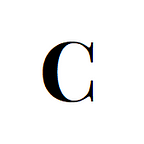A Closer Look At 1940s-1960s Zenith Chronographs
All the good stuff is too expensive.
That’s what you would think if you’ve followed vintage chronograph prices since the ‘80s or ’90s. First it was the Rolex Daytonas from the ’60s. Balanced, lovely, well-designed, and now the cost of a very nice car or a cheap house. Heuer chronographs? Um, also already in rich-guy territory. Vintage ‘Ed White’ Speedmasters? Forget about it. Universal Geneve’s ‘Nina’ or ‘Evil Nina?’ Hodinkee took care of that.
So what’s left?
In an earlier ‘Closer Look’ column, we examined the earlier calendar and chronograph complications used in the 1940s and ’50s by Universal Geneve. These movements were built and designed by Martell, a company situated not far from UG in Le Locle. In those days, the bonds between UG and Martell were very strong.
As also stated in the earlier article, there was another famous Swiss watch firm involved with Martell and Universal Geneve: Zenith.
In the 1930s, both Zenith and Universal Geneve started to use some Martell ebauches in their watches. Both companies also used the same ‘Compax’ and ‘Compur’ brand names for their chronographs. Starting in the ’40s, Martell’s chronograph caliber 749 was the starting point for UG’s cal. 285 and the Zenith 146 and 156 calibers.
In effect, the bones and guts of many 1940s-1960s Universal Geneve and Zenith chronographs are the same. And both watch lines are absolute classics.
A hint; while the 146 and 156 calibers have similar designs, the 156 is of larger size. Most watches packing the latter as a movement are around 37mm or 38mm, truly 'jumbo' or 'XL' for vintage watch standards. By the ’50s, Martell could even manufacture chronograph movements that had full calendar and moonphase complications involved. So it made sense that as UG moved away from Martell, Zenith moved closer; buying 100% of the movement maker in 1960. In effect, this merger/buy-out allowed the 146 to be a fully 'in-house' movement for Zenith.
There’s something about midcentury Zenith and UG chronographs.
Many of their designs equal the heavy hitters mentioned in the beginning of the article. Some might even do better. But for one reason or another, these watches aren’t on such a high price level. This is probably because unlike Rolex or Heuer, Zenith isn’t a marketing behemoth. UG doesn’t really exist anymore. So these are pieces for the heads, the diggers.
One more thing: for a lot of watch historians, the 146 is just a prelude. In '62 Zenith engineers had a new task; to develop the first automatic chronograph. The result was the 'El Primero' which debuted in 1969. Sort of like Omega with the moon watch, or Rolex with its Oyster cases, Zenith became known for the 'El P.' It was surely an engineering and marketing triumph, but the focus on the El Primero has taken away some shine from the earlier Zenith pieces.
At the time of writing, steel examples from the 50s and 60s could be found for around $5k USD, and gold examples (which were much more common) could be sometimes acquired for half that price. In a world where the prices of many vintage timepieces have accelerated into the stratosphere, it’s nice to find a group of interesting watches at down-to-earth prices.
Of course, if you expand your search to include not just examples from Zenith but also Universal Geneve and Movado (remember they were ‘brothers’ of Zenith for a while!) there’s even more good stuff to be found. Buyers at the time cross-shopped these watches with similar pieces from Heuer and Rolex, and all are of similar quality. If we had to pick, we’d grab a Zenith two register piece with a sharp case and a lot of negative space on the dial.
